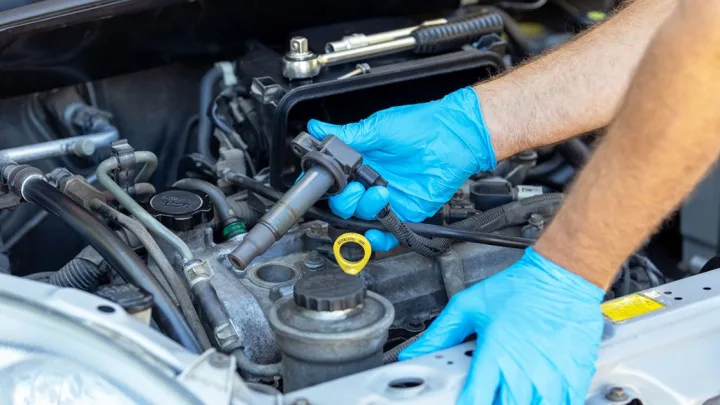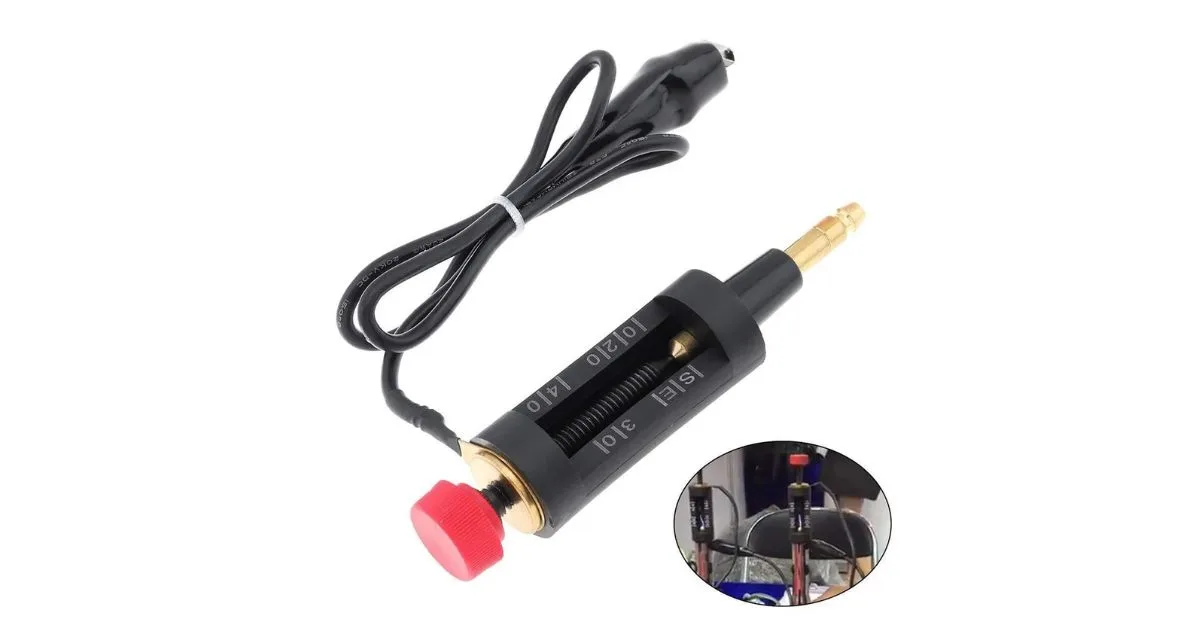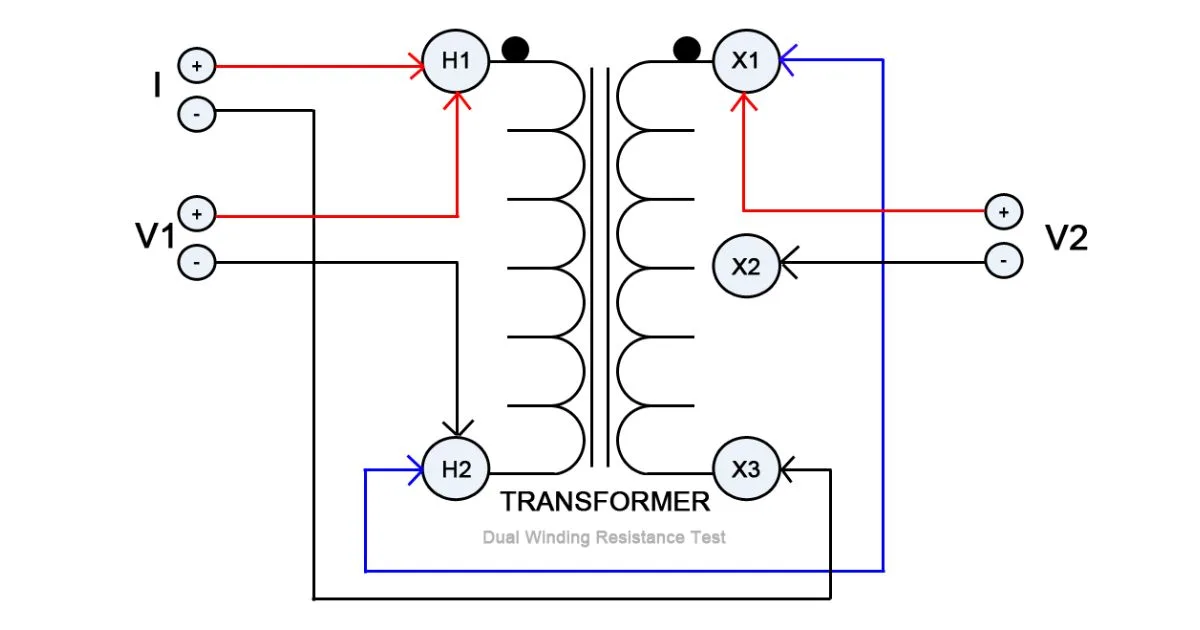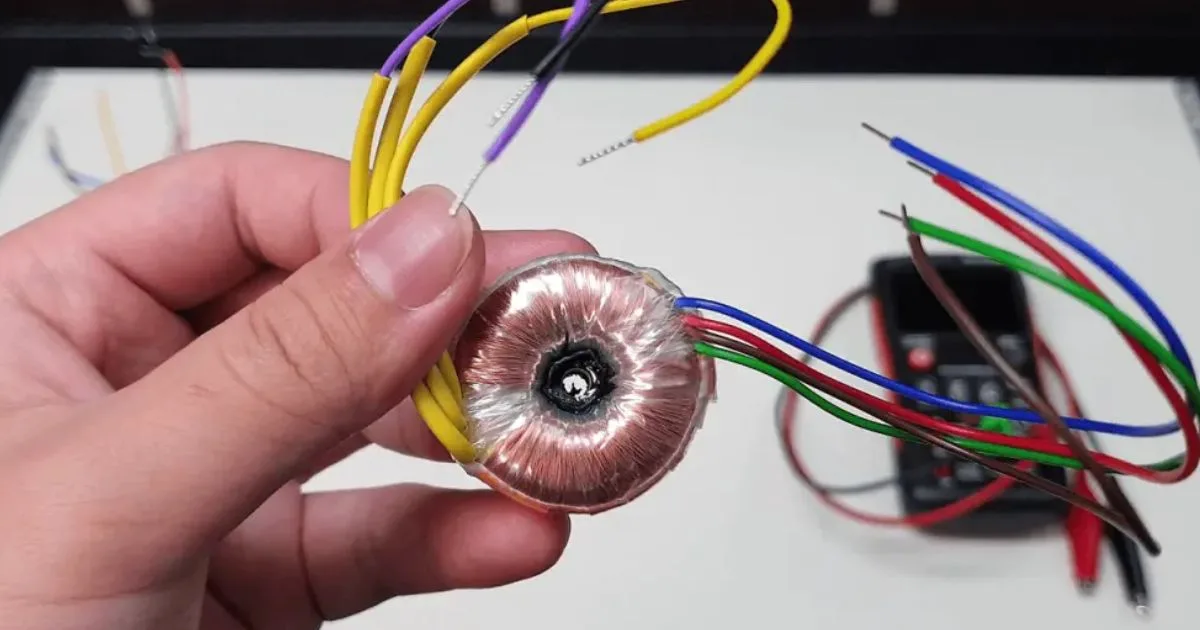
To test Club Car ignition coil parts like a pro, first check for spark and then measure the coil's resistance. These steps ensure accurate diagnostics.
Testing ignition coil parts in Club Cars can seem daunting, but following a structured approach simplifies the process. Proper testing helps identify faulty components, ensuring your vehicle runs smoothly. Begin by checking for a spark, which indicates if the coil is functioning.
Next, measure the coil’s resistance using a multimeter. These steps provide a comprehensive assessment of the ignition coil's health. Understanding the process not only saves time but also prevents unnecessary replacements.
This guide aims to equip you with the knowledge to test ignition coils efficiently, ensuring optimal performance of your Club Car.
Introduction To Ignition Coils
Ignition coils are crucial components in any vehicle's ignition system. They convert the battery's low voltage into high voltage. This high voltage is necessary to create a spark in the spark plugs, which ignites the fuel. This ignition process is essential for the engine to run smoothly. Without proper ignition coils, your vehicle may not start or run efficiently.
Purpose Of Ignition Coils
The primary purpose of ignition coils is to generate a high voltage. This high voltage is then sent to the spark plugs. Spark plugs use this voltage to ignite the air-fuel mixture in the engine.
Ignition coils ensure that the spark is strong enough to start the engine. They also help maintain engine performance. A faulty ignition coil can lead to engine misfires and poor fuel economy.
Common Issues
Ignition coils can face several common issues. Knowing these issues can help in diagnosing problems early.
- Engine Misfires: A weak or faulty coil can cause engine misfires.
- Poor Fuel Economy: A malfunctioning coil can reduce fuel efficiency.
- Starting Problems: The engine may struggle to start if the coil is faulty.
- Check Engine Light: A bad ignition coil can trigger the check engine light.
Regular testing and maintenance of ignition coils can prevent these issues. Keeping your ignition system in top shape ensures better vehicle performance.
Related Post
5 Reasons Spark Plug Wires May Not Be Compatible With Your Vehicle
The Importance of a Distributor in Your Car: More Than Just Spark
10 Warning Signs Your Car’S Spark Plugs Need Replacing
Mastering Car Ignition Coils: A Step-By-Step Testing Guide
 Essential Tools For Testing
Essential Tools For Testing
Essential Tools For Testing
Testing your Club Car ignition coil parts requires specific tools. These tools help ensure accuracy and safety. Here are the must-have tools:
Multimeter
A multimeter is crucial for testing electrical components. It measures voltage, resistance, and current. To test an ignition coil:
- Set the multimeter to the ohms setting.
- Connect the probes to the coil terminals.
- Read the resistance value on the display.
Compare the resistance value with the manufacturer's specifications. This helps determine if the coil is functioning correctly. A significant deviation indicates a faulty coil.
Spark Tester
The spark tester checks for spark presence. This tool helps ensure the ignition coil is firing properly. To use a spark tester:
- Attach the tester to the spark plug wire.
- Ground the tester's metal end to the engine.
- Start the engine and observe the tester.
If you see a spark, the coil is working. If not, the coil may be bad. Using a spark tester is quick and effective.
Safety Precautions
Testing ignition coil parts requires attention to safety. Proper precautions ensure your safety and the functionality of your vehicle. Here are some crucial tips for safely testing club car ignition coil parts.
Personal Protective Equipment
Always wear personal protective equipment (PPE) to safeguard yourself. This includes:
- Safety glasses to protect your eyes from sparks and debris.
- Insulated gloves to avoid electric shocks.
- Long sleeves and pants to minimize skin exposure.
Safe Work Environment
Ensure your work area is safe and well-organized. Follow these steps:
- Work on a non-conductive surface to prevent electrical accidents.
- Keep your workspace clean and free of flammable materials.
- Ensure adequate lighting for clear visibility.
By adhering to these safety precautions, you can test ignition coil parts effectively and safely.
Locating The Ignition Coil
Finding the ignition coil in your Club Car is essential. This guide will help you locate it easily. Ignition coils are crucial for your car's performance. Follow these steps to find it like a pro.
Engine Layout
First, understand your Club Car's engine layout. Most engines have a similar design. The ignition coil is usually near the engine's top. It connects to spark plugs via wires.
| Engine Part | Location |
|---|---|
| Ignition Coil | Near the top of the engine |
| Spark Plugs | Connected to the ignition coil |
| Battery | Usually at the front |
Identification Tips
Identify the ignition coil with these tips:
- Look for a small, black box.
- Check for wires connected to spark plugs.
- Find the coil near the engine's top.
Use these steps to locate the ignition coil easily. Once you find it, you can test it for performance.
Preliminary Visual Inspection
Before diving into complex tests, start with a preliminary visual inspection. This step helps spot obvious issues quickly. It saves time and effort. Below are key areas to focus on during your inspection.
Signs Of Damage
Look for visible signs of damage on the ignition coil. Check for cracks, burns, or corrosion. These signs indicate serious problems. If you see any, the coil may need replacement.
- Cracks: Small or large, they compromise the coil's function.
- Burns: Burn marks show overheating issues.
- Corrosion: Rust or corrosion weakens the metal parts.
Connection Check
Inspect all connections linked to the ignition coil. Loose or corroded connections cause poor performance. Make sure each connection is secure and clean.
- Terminal Connections: Ensure all terminal connections are tight.
- Wire Condition: Check for frayed or damaged wires.
- Connector Pins: Verify that all pins are straight and intact.
| Inspection Area | What to Look For |
|---|---|
| Coil Housing | Cracks, Burns, Corrosion |
| Terminal Connections | Loose or Corroded Connections |
| Wires | Frayed or Damaged |
| Connector Pins | Straight and Intact |
By performing a thorough preliminary visual inspection, you can identify potential issues early. This simple step improves the efficiency of your testing process.
 Testing Primary Windings
Testing Primary Windings
Testing Primary Windings
Testing primary windings of your Club Car ignition coil is crucial. It ensures that your ignition system functions perfectly. This section will guide you on how to test primary windings like a pro.
Setting Up The Multimeter
First, gather your tools. You need a multimeter and safety gloves. Follow these steps to set up your multimeter:
- Turn the multimeter dial to the resistance setting (ohms).
- Connect the red probe to the positive terminal.
- Connect the black probe to the negative terminal.
Ensure the connections are secure. Now you are ready to test the primary windings.
Interpreting Results
Now, you need to measure the resistance. Place the probes on the ignition coil's primary terminals. Observe the reading on the multimeter.
Here is what the readings mean:
| Resistance (Ohms) | Condition |
|---|---|
| 0 - 0.5 | Shorted Coil |
| 0.5 - 2 | Normal Coil |
| 2+ | Open Coil |
If the resistance is within the normal range, your ignition coil is fine. If not, you may need to replace it. Always double-check your results. This ensures accuracy and safety.
Testing Secondary Windings
Testing the secondary windings of an ignition coil ensures its efficiency. This process can help identify issues before they become serious. Below are expert tips for testing secondary windings like a pro.
Resistance Measurement
To measure the resistance of the secondary windings, follow these steps:
- Turn off the engine and remove the ignition coil.
- Set your multimeter to the ohms setting.
- Connect the multimeter probes to the coil's terminals.
- Read the resistance value displayed on the multimeter.
Ensure you follow these steps carefully. Incorrect measurements can lead to wrong conclusions.
Related Post
The True Cost of Fixing Your Car’S Glow Plugs
The Ultimate Guide to Spark Plug Cable Compatibility for Your Vehicle
How to Budget for Ignition Coil Replacement: Tips And Tricks
How to Effectively Test Your Magneto Ignition Coil: Tips And Tricks
5 Common Mistakes When Replace a Distributor Cap Could Stop Your Car
How an Car Ignition Box Works: From Key Turn to Engine Roar
Common Values
Common resistance values for secondary windings usually range between 6,000 to 12,000 ohms. Refer to your vehicle's manual for specific values. Below is a table for quick reference:
| Vehicle Type | Resistance Range (Ohms) |
|---|---|
| Golf Cart | 6,000 - 9,000 |
| Utility Vehicle | 8,000 - 12,000 |
If the resistance is outside these ranges, the coil may be faulty. Regular testing can save you from unexpected issues.
Additional Testing Methods
Testing ignition coil parts in your Club Car can be tricky. Additional testing methods ensure you get accurate results and maintain your vehicle's performance. Let's dive into two essential techniques to test your ignition coil parts like a pro.
Using A Spark Tester
A spark tester is a must-have tool. It checks if your ignition coil generates a spark.
Follow these steps to use a spark tester:
- Turn off the engine and remove the spark plug wire.
- Connect the spark tester to the spark plug wire.
- Attach the other end of the tester to the spark plug.
- Start the engine and observe the spark tester window.
If you see a bright spark, your ignition coil is working. If the spark is weak or absent, there may be an issue.
Advanced Diagnostic Tools
For more detailed testing, use advanced diagnostic tools. These tools provide precise data on your ignition coil's performance. Here are a few examples:
| Tool | Description |
|---|---|
| Multimeter | Measures voltage, resistance, and continuity. |
| Oscilloscope | Displays the ignition coil's waveform. |
| Scan Tool | Reads error codes from the vehicle's computer. |
Using a multimeter, you can check the resistance of the ignition coil. Set the multimeter to the ohms setting. Connect the leads to the ignition coil terminals. Compare the reading to the manufacturer's specifications. An oscilloscope helps visualize the ignition coil's waveform.
It shows any irregularities in the spark pattern. A scan tool reads error codes from the vehicle's computer. It identifies issues related to the ignition system. By using these additional testing methods, you can ensure your Club Car ignition coil is in top shape.
 Troubleshooting And Solutions
Troubleshooting And Solutions
Troubleshooting And Solutions
Testing your Club Car ignition coil can seem tricky. With expert tips, you can troubleshoot and find solutions like a pro. This section covers common problems and whether to repair or replace the coil.
Common Problems
Ignition coils can face many issues. Here are some common problems:
- No Spark: This could mean the coil is dead.
- Weak Spark: The coil may be failing.
- Intermittent Spark: Check for loose connections.
To diagnose these problems, use a multimeter. Set it to the ohms setting. Measure the primary and secondary windings.
| Winding | Expected Resistance |
|---|---|
| Primary Winding | 0.4 to 2 ohms |
| Secondary Winding | 6,000 to 12,000 ohms |
If the readings are outside these ranges, the coil is faulty.
Repair Or Replace
Deciding to repair or replace your ignition coil depends on the problem:
- No Spark: Replace the coil. Repairs are often not worth it.
- Weak Spark: Check connections first. If connections are fine, replace the coil.
- Intermittent Spark: Tighten any loose connections. If the problem persists, replace the coil.
Always use a quality replacement coil. It ensures your Club Car runs smoothly.
Conclusion And Best Practices
Testing your Club Car ignition coil parts can be easy. Follow these expert tips to ensure your vehicle runs smoothly. Regular checks and professional help are essential.
Regular Maintenance
Regular maintenance is the key to keeping your ignition coil in top shape. Make a checklist for your vehicle:
- Check the ignition coil monthly.
- Clean the coil connections regularly.
- Inspect for cracks or damages.
Keep a logbook of your maintenance activities. This will help you track any issues and prevent future problems.
Professional Help
Professional help can save you time and money. If you notice any issues, it is best to consult a certified mechanic. Here's why:
| Benefits | Description |
|---|---|
| Expertise | Professionals have the right tools and knowledge. |
| Accuracy | They can diagnose issues accurately. |
| Safety | Ensures your vehicle is safe to drive. |
Keep the contact information of a reliable mechanic handy. This ensures you get quick help when needed.
Frequently Asked Questions
How To Test A Club Car Ignition Coil?
Use a multimeter to check resistance values. Compare readings to manufacturer specifications to ensure functionality.
What Are Symptoms Of A Bad Ignition Coil?
Symptoms include engine misfires, poor acceleration, and difficulty starting. These indicate a failing ignition coil.
Can A Faulty Ignition Coil Cause Stalling?
Yes, a faulty ignition coil can cause engine stalling. It disrupts the spark plug's ability to ignite fuel.
How Often Should Ignition Coils Be Tested?
Test ignition coils annually or every 12,000 miles. Regular checks prevent unexpected engine issues.
Conclusion
Mastering the testing of Club Car ignition coil parts is essential. Use these expert tips for accurate results. Practice regularly to refine your skills. Your Club Car's performance will benefit greatly. Stay proactive in maintaining your vehicle, ensuring a smoother ride. Happy testing, and may your Club Car always run efficiently!
Disclosure
Some links may be affiliate links. That means we may earn a small commission at no extra cost to you.